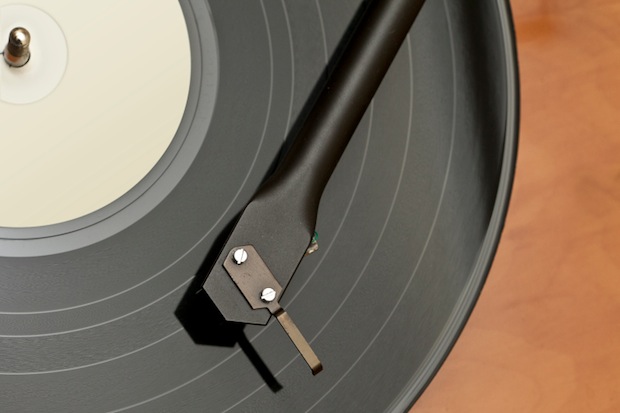A rustle of paper as the sleeve is removed. A clunk and click as the needle arm is swung across. The needle hits the vinyl, bringing it to life. At first there’s a lot of crackling in the ether. Then at last the music begins. A sultry saxophone. A few notes on the guitar, slow, low and relaxed. At last the voice enters.
It’s not at all what you would expect from that swingband opening. The voice is strong, unmelodic, harsh almost, but so passionate you’re drawn in straight away. We’re told it’s Little Miss Cornshucks. She’s singing a version of ‘Try a little tenderness’ that sounds just as good, if not better, than Otis Redding’s amazing version from 1966. Who is she? You might well ask. Salena Godden went in search of her and ended up in Chicago, as we found out on Tuesday morning on Radio 4 in Try a Little Tenderness: The Lost Legacy of Little Miss Cornshucks (vividly produced by Rebecca Maxted).
Little Miss Cornshucks recorded the song in 1951 (with Coral records) long before Otis Redding (or even Aretha Franklin) and was a big hit, especially in Chicago at the Club DeLisa, but who knows her now? She was born Mildred Cummings in May 1923 in Dayton, Ohio, and brought up poor but encouraged to sing by her parents. She makes ‘Try a little tenderness’ completely her own by changing the lyrics from those you might have heard sung by Otis. Little Miss Cornshucks makes the song personal, as if it’s her own story she’s telling.
‘I may be weary, Women do get weary, Wearing the same shabby dress…’ She sings straight from the heart, and gives us the woman’s perspective, in stark contrast to Otis Redding. It’s a pure transmission of feeling, nothing conjured up about it, or theatrical. She’s singing of what she knows. On stage at the Club DeLisa she added to the pathos by turning up in a shabby dress and walking on stage barefoot (eat your heart out, Sandie Shaw).
What makes her performance so compelling is the way she phrases each word, each line. It’s such an incredibly simple performance, no decoration, no added effect; the line is pure, immediate, the meaning of each and every word brought home. Ahmet Ertegun, the man behind Atlantic Records, who promoted so many black singers, declared that Little Miss Cornshucks was ‘the best blues singer he had ever heard’. So why did she never have the big audience, or big money, she deserved?
Bad luck, bad management and missed opportunity, concluded Godden, who talked to those who had heard Little Miss Cornshucks at the Club DeLisa, and to her daughter and granddaughter. We discovered that Mildred was married young to a feckless husband who treated her bad and led her into drink. She is, though, not completely forgotten. Cerys Matthews has played her records on her 6 Music show and Amy Winehouse must have listened to her at some point because her phrasing, the way she sings her songs, seems to come straight from Little Miss Cornshucks. The pathos, too, is the same. The story. The woman’s plight.
On Wednesday the radio producer Neil Kanwal told the story of how he came to be in England in Three Continents, Three Generations (Radio 4, produced by Heather Davies). Kanwal’s grandfather left rural India in the 1930s and travelled to Nairobi, hoping to find in Kenya better opportunities to make a living. He was following on from the 32,000 Indians who were taken to Kenya in 1896 by the British as indentured labourers to work on the construction of the railway from Mombasa on the coast to Lake Victoria in Uganda. In the late 1950s this same grandfather crossed continents again, transplanting his family from Nairobi to London after sensing that change was coming. He feared rightly that after independence Kenya would no longer be so welcoming to those of Asian descent.
In three generations Kanwal’s family (like many other Asian families) moved from rural India to urban Kenya to suburban London (or Leicester). Where now do they belong?
Kanwal travels back to Kenya and on the Uganda railway, which still runs on the same tracks laid by those first Asians in Africa. He meets other Indians both there and back in London to find out whether they identify themselves as Africans, or Asians, or something in-between. One man in England tells Kanwal that he sees himself as Indian, even though he was actually born and brought up in Kenya and has never lived on the subcontinent. His children, though, think of themselves as British. ‘They don’t even put Asian,’ he tells Kanwal, whenever they are asked to fill in that bit of the form which asks for your ethnicity. The biggest shock for Kanwal’s father on arrival in England was to see white men digging the road. Back in Kenya such work would have been done by Africans or Asians, but never by white people.






Comments